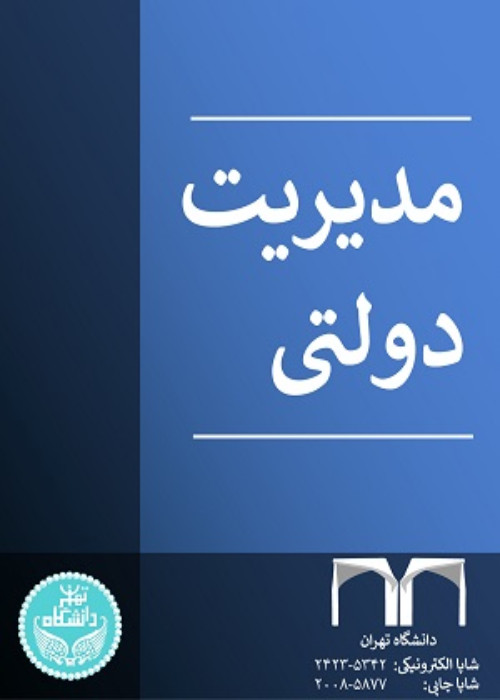A Problem-situation Analysis of Livestock Policies in Iran
Author(s):
Article Type:
Research/Original Article (دارای رتبه معتبر)
Abstract:
Objective
Providing correct answers to unproperly defined problems is a strategic error that may make policy-making systems fail. The first crucial step in policy analysis is the effective recognition of problematic situations. Policies on basic food products are of significance to all countries, and livestock food products stand among the most important basic products in Iran. The objective of this study is to examine and analyze the current state of the livestock policy in Iran, specifically from the viewpoint of the issue owner, the Iranian Ministry of Agriculture.Methods
The research data, collected through conducting interviews and reviewing documents, were analyzed utilizing the thematic analysis and the Diagnosing Policy Problem Situations Model by Thissen (2013).Results
First, the institutional arrangements dominating the problem situation were extracted. Then, referring to the problem owner, i.e., the Ministry of Agriculture of Iran, the problem situation model was explained. In the next step, the comprehensive problem situation system was re-defined using the Ishikawa (cause and effect) diagrams, the objectives tree, and causal analysis. Alternative policy solutions were extracted by a means-ends diagram. An objectives tree diagram was used to clarify the goals and anticipated outcomes of the policy. Additionally, a causal analysis diagram was utilized to identify the relationships between variables within the policy problem situation model. Ultimately, the comprehensive livestock policy problem situation model of Iran was restructured.Conclusion
The regulation of the market is regarded as the primary component of the livestock policy problem situation. Nonetheless, other significant components also contribute to ensuring sustainable food security, with strengthening production in the domestic supply chain being one of them. To achieve food security and further goals such as public health and welfare, independence, national security, and progress, Iran needs to adopt a new perspective on the issue. The livestock policy problem situation model encompasses the sustainable food security system as its primary comprehensive system, which consists of two additional subsystems. These subsystems include enhancing domestic production within the supply chain and implementing effective consumption management strategies. To attain the goals outlined in the livestock policy, including sustainable food security, public health and welfare, national independence and security, and economic growth, it is crucial to adopt a broader perspective and implement alternative policies, all while taking into account external factors. The current study effectively utilized the policy analysis model and demonstrated its efficacy in addressing a significant and real issue in Iran.Keywords:
Language:
Persian
Published:
Quarterly Journal Public Administration, Volume:15 Issue: 53, 2023
Pages:
180 to 203
magiran.com/p2567540
دانلود و مطالعه متن این مقاله با یکی از روشهای زیر امکان پذیر است:
اشتراک شخصی
با عضویت و پرداخت آنلاین حق اشتراک یکساله به مبلغ 1,390,000ريال میتوانید 70 عنوان مطلب دانلود کنید!
اشتراک سازمانی
به کتابخانه دانشگاه یا محل کار خود پیشنهاد کنید تا اشتراک سازمانی این پایگاه را برای دسترسی نامحدود همه کاربران به متن مطالب تهیه نمایند!
توجه!
- حق عضویت دریافتی صرف حمایت از نشریات عضو و نگهداری، تکمیل و توسعه مگیران میشود.
- پرداخت حق اشتراک و دانلود مقالات اجازه بازنشر آن در سایر رسانههای چاپی و دیجیتال را به کاربر نمیدهد.
In order to view content subscription is required
Personal subscription
Subscribe magiran.com for 70 € euros via PayPal and download 70 articles during a year.
Organization subscription
Please contact us to subscribe your university or library for unlimited access!


